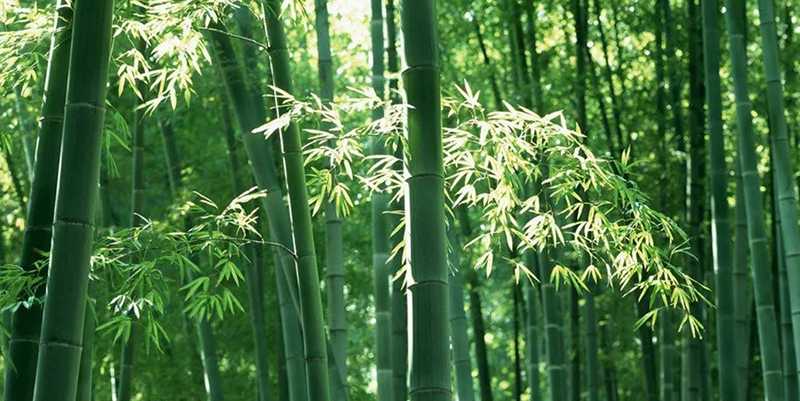She is called "three friends", and "four gentlemen", has noble, tenacious, modesty and other good character. He is the gentleman, extraordinary, majestic; she is a lady appearance, bamboo branches slender, graceful, graceful!
Bamboo is an important ecological, industrial and cultural resource, and an important raw material for low-carbon and circular ecological environment-friendly and resource-saving products. The development of bamboo industry plays a prominent position in the expansion of circular economy and has broad prospects.

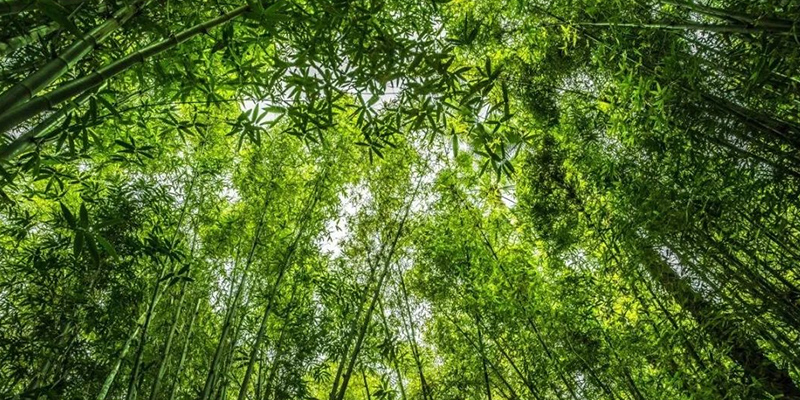
1. Bamboo forest
China is the country with the most abundant bamboo resources in the world, with 39 genera and more than 530 species of bamboo plants. China ranks the first in bamboo seed resources, bamboo forest area, bamboo accumulation and yield in the world, and has the reputation of "Kingdom of Bamboo". There are more than 530 species of bamboo plants in 39 genera in China. According to the data, the area of bamboo forests in China is 6.8 million hectares, accounting for 1 / 3 of the world's bamboo forest resources. Among them, 4.7 million hectares of bamboo forests and 2.1 million hectares of other bamboo forests. Accounting for 1 / 3 of the world's bamboo forest resources.
China's bamboo resources are mainly distributed in Fujian, Jiangxi, Sichuan, Hunan, Zhejiang, Guangdong, six provinces accounting for 77.6% of the national bamboo resources. In addition, Hubei, Yunnan, Shaanxi, Chongqing, Guizhou and other provinces and cities also have bamboo forest resources distribution, but the proportion is relatively low, not more than 4%. There are altogether 16 major bamboo-producing provinces in China. Bamboo is the main forest area, in which Jiangxi, Fujian, Hunan and Zhejiang provinces account for about 80% of the national bamboo forest area. In recent years, a number of excellent and efficient bamboo species such as thunder bamboo, hemp bamboo, green bamboo and square bamboo have been cultivated and developed in a large area, and then a new pattern of comprehensive development of scattered bamboo, overgrown bamboo, large bamboo, small and medium bamboo, native bamboo, introduced bamboo species, ecological bamboo forest and economic bamboo forest has been formed. Bamboo forest accounted for the largest 36%, followed by bamboo forest, ecological public bamboo forest and pulp bamboo forest, accounting for 24%, 19% and 14% respectively. Bamboo shoots and scenic bamboo forests are relatively small, with 6% and 1%, respectively. It is estimated that in 2022, China will produce 4.25 billion bamboo forests and 2.92 million tons of bamboo pulp.

2. Bamboo food and beverage
In China, bamboo shoots food from fresh food, fresh bamboo shoots processing into clear water bamboo shoots, dried bamboo shoots, multi-flavor bamboo shoots and other traditional primary processing products. China's edible bamboo shoot resources are extremely rich, including bamboo, arhat bamboo, square bamboo and other excellent varieties, bamboo shoot food to fresh food and primary processing products, product added value is low, at present is deep processing continuous breakthrough. Data show that China's dried bamboo shoots output reached 858,000 tons, with Fujian, Zhejiang and Sichuan accounting for 60 percent of the country's total output, followed by Hunan, Guangdong, Jiangxi, Anhui, Guangxi, Chongqing and other regions.

3. Bamboo building materials
Bamboo is easy to grow, easy to process, the production cost of bamboo products is lower than wood materials. In recent years, environmental protection has become the first factor of urban residents' home demand. It is expected that the market size of bamboo products in China will reach 42.5 billion yuan in 2022.
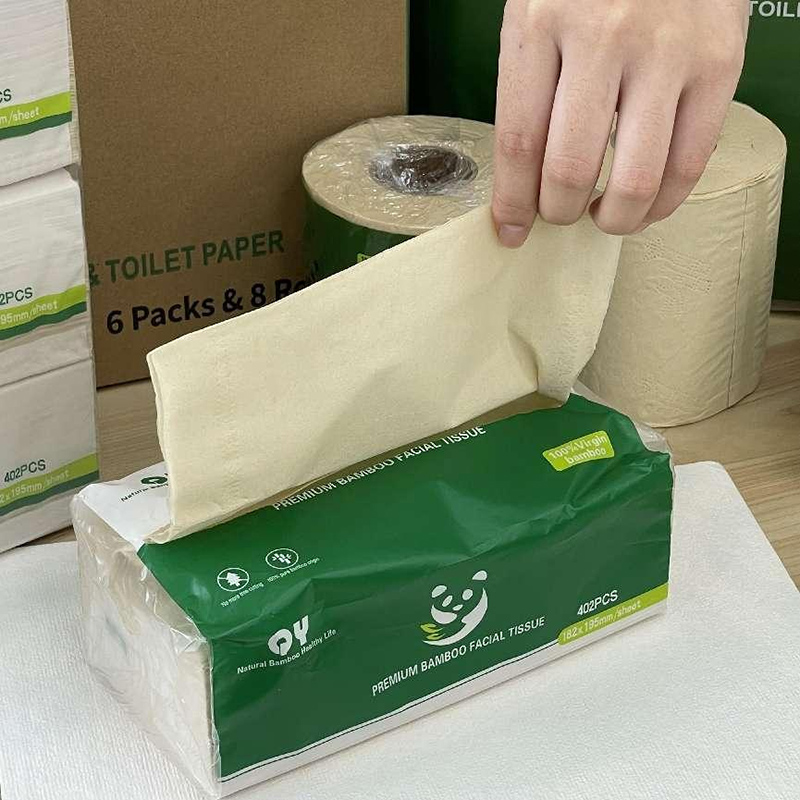
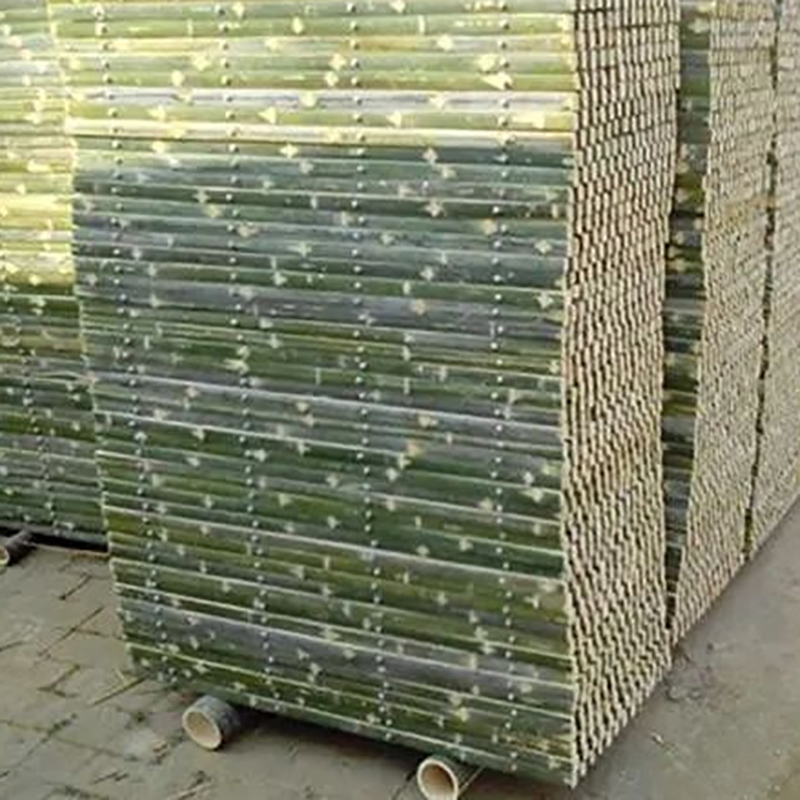
4. Bamboo products
The production and sales volume of bamboo products in China ranks the first in the world. Among the bamboo tableware, disposable bamboo products and chopsticks accounted for the largest proportion, with 36 percent and 28 percent, respectively. Followed by bamboo chopping board, accounting for 11%.
5. Paper making
Bamboo pulp is made from bamboo, bamboo, bamboo and other bamboo as raw materials, commonly used sulfate method and caustic soda method. The bamboo pulp is a medium-long fiber pulp, thin and soft. Pine thickness, high tear degree, low resistance and breaking strength and tensile strength. Bamboo pulp paper is mainly used in household paper, paper pulp molding, cultural paper, food kraft paper. Low-carbon, ecological, green, environmentally friendly bamboo pulp household paper is more and more popular with consumers at home and abroad, toilet paper market accounts for as much as 57%.

Developing bamboo pulp and paper making is an effective way to solve the contradiction between supply and demand in China's paper making industry, and also a realistic method to adjust the raw material structure of China's paper making industry, which can make up for the gap of middle and high grade pulp in China, and has great development potential. Bamboo is the best raw material for paper making besides wood. The fiber form and content of bamboo is similar to the coniferous wood most suitable for paper making. The cellulose content is high, the fiber is slender and strong, good plasticity, and the fiber length is between broad-leaved wood and coniferous wood. Bamboo pulp can be alone or with wood pulp, grass pulp reasonable ratio, to produce high-quality and inexpensive paper pulp molding, cultural paper, household paper and packaging paper.
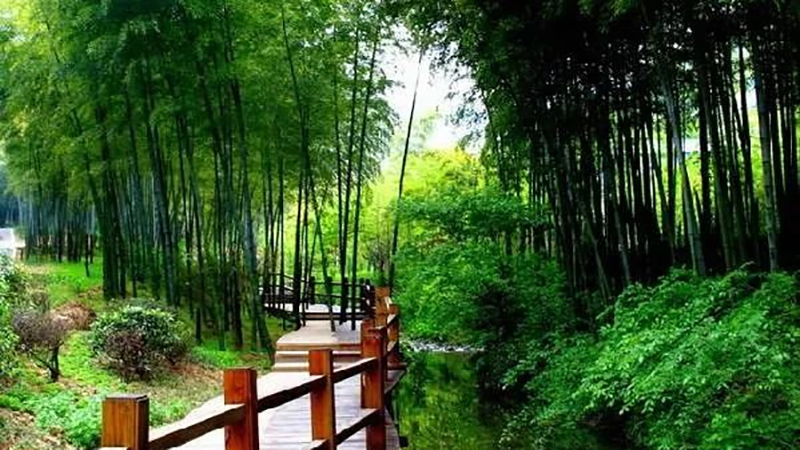
Compared with wood, bamboo grows fast and has high yield, and can be used sustainably at a time. Therefore, more and more paper industry enterprises begin to turn their eyes to bamboo pulp and paper. China's pulp raw material structure is in the conversion period. The tightening of waste paper import policy leads to the rapid reduction of domestic waste pulp supply, and the tightening of supply and demand of pulp leads to the increase of import dependence. Bamboo pulp, using chemical method, mechanical method or a combination of the two methods to make the plant fiber raw material dissociation into natural pulp, can be bleached. In people's impression, paper pulp is a highly polluting industry. In fact, most enterprises have solved the pollution problem, and the water resources have been recycled, basically solving the pollution of grass fiber pulp making, and reducing the wastewater discharge and discharge concentration.
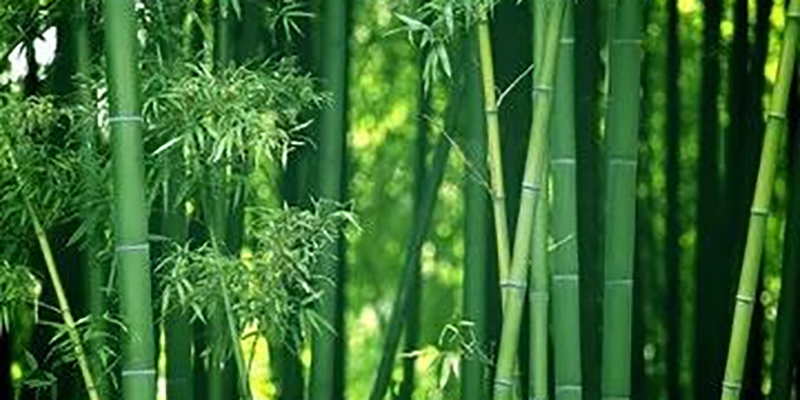
6. Bamboo culture industry
The development of bamboo culture tourism is resource-dependent. With the development of the benefits of bamboo forest resources in health, leisure and health, it is expected that the number of bamboo forest tourism in China will reach 180 million tourists in 2025.
